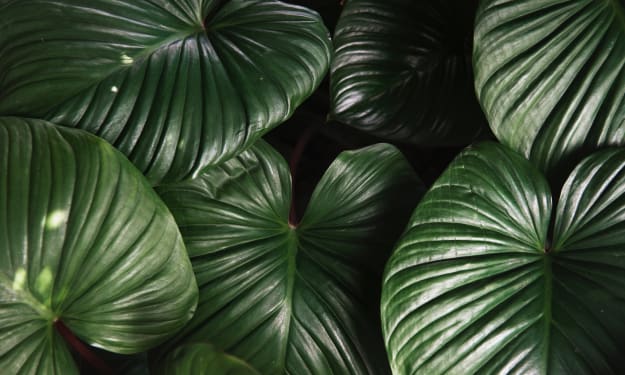Some Tips to Make Your Garden More Sustainable
Hi! I’m Bernard Michael Rochford. If you are interested in conservation, but also love gardening, this blog is for you.

Hi! I’m Bernard Michael Rochford. If you are interested in conservation, but also love gardening, this blog is for you. Creating a sustainable garden is a fantastic way to contribute to environmental conservation while enjoying the beauty and productivity of your outdoor space.
So, let’s dig in.
Planning Your Sustainable Garden

1. Choose Native Plants
Native plants are well-adapted to the local climate and soil, requiring less water and maintenance. They also provide essential habitats and food sources for local wildlife. Research and select plants native to your region to create a thriving, low-maintenance garden. In Australia, these could be plants like Acacia, Banksia, Wattle and so on.
2. Consider Plant Diversity
A diverse garden is more resilient to pests and diseases. Incorporate a variety of plants, including flowers, shrubs, and trees, to create a balanced ecosystem. Companion planting, where certain plants are grown together for mutual benefit, can also enhance plant health and productivity.
3. Design for Water Efficiency
Water is a precious resource in Australia. Design your garden to maximise water efficiency:
Group plants with similar water needs: This allows for more targeted and efficient watering.
Implement rainwater harvesting: Install rain barrels to collect and store rainwater for garden use.
Use mulch: Mulching helps retain soil moisture, suppress weeds, and improve soil health.

Building Healthy Soil
1. Composting
Composting is an excellent way to recycle organic waste and improve soil health. Compost adds essential nutrients to the soil, enhances its structure, and promotes beneficial microorganisms. Start a compost bin or pile and regularly add kitchen scraps, garden waste, and other organic materials.
2. Mulching
Organic mulches, such as straw, wood chips, and leaves, protect the soil from erosion, retain moisture, and regulate soil temperature. Apply a thick layer of mulch around plants, making sure to keep it away from the stems to prevent rot.
3. Avoid Chemical Fertilisers and Pesticides
Chemical fertilisers and pesticides can harm beneficial insects, soil microorganisms, and the broader environment. Use organic fertilisers, such as compost and manure, and adopt natural pest control methods, like attracting predatory insects and using insecticidal soaps.

Conserving Water
1. Drip Irrigation Systems
Drip irrigation systems deliver water directly to the plant roots, reducing water waste and evaporation. They are particularly effective for vegetable gardens and flower beds.
2. Watering Practices
Water your garden during the early morning or late evening to minimize evaporation. Use a watering can or hose with a trigger nozzle to control water flow and avoid over-watering.
3. Rain Gardens
Rain gardens are designed to capture and filter rainwater runoff from roofs, driveways, and other surfaces. They help reduce erosion, recharge groundwater, and provide habitat for wildlife. Plant your rain garden with deep-rooted native plants that can tolerate both wet and dry conditions.
Supporting Local Wildlife
1. Create Habitats
Provide habitats for local wildlife by incorporating features such as birdbaths, ponds, and nesting boxes. Planting a variety of flowering plants will attract pollinators like bees, butterflies, and birds.
2. Avoid Invasive Species
Invasive plants can outcompete native species and disrupt local ecosystems. Familiarise yourself with local invasive species and avoid planting them in your garden.
3. Provide Food Sources
Include plants that produce seeds, berries, and nectar to support local wildlife. For example, banksias and grevilleas are excellent for attracting nectar-feeding birds and insects.
Sustainable Gardening Practices
1. Reduce, Reuse, Recycle
Minimise waste by reusing materials and recycling garden waste. Use recycled materials for garden structures, such as trellises and raised beds, and repurpose old containers for planting.
2. Hand Weeding and Natural Mulches
Avoid chemical herbicides by hand weeding and using natural mulches to suppress weeds. This helps maintain soil health and prevent the spread of toxins.
3. Crop Rotation and Cover Crops
Rotate crops to prevent soil depletion and reduce pest and disease buildup. Plant cover crops, such as clover or legumes, to improve soil fertility and structure during off-seasons.
Conclusion
Creating a sustainable garden in Australia not only benefits the environment but also provides a beautiful, productive space for you to enjoy. By choosing native plants, conserving water, building healthy soil, and supporting local wildlife, you can cultivate an eco-friendly garden that thrives in harmony with nature. Embrace sustainable gardening practices and contribute to a greener, healthier planet. Happy gardening!
About the Creator
Bernard Michael Rochford
I am Bernard Michael Rochford, a sports enthusiast passionate about AFL, supporting Carlton and Brisbane Lions. I enjoy gardening, barbecuing, bushwalking, and bird watching. I advocate for regenerative farming and sustainability.
Enjoyed the story? Support the Creator.
Subscribe for free to receive all their stories in your feed. You could also pledge your support or give them a one-off tip, letting them know you appreciate their work.






Comments
There are no comments for this story
Be the first to respond and start the conversation.